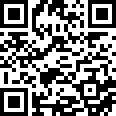Online two-sided platforms, such as dating apps, have gained widespread popularity in recent years. However, these platforms often suffer from recommendation inequality such that recommendations are concentrated on a small group of users in terms of both counts and matches. This can lead to congestion in that multiple users are recommended to a single user, which ultimately discourages user participation and reduces market thickness. To address this issue, a research team including Prof. Ming-Jen Lin, Kuan-Ming Chen of the Department of Economics, and Prof. Yu-Wei Hsieh from Amazon with a prominent dating platform in Taiwan to design and implement a new dating recommender system based on a stylized two-sided matching model. The recommender system was assessed through a large-scale randomized field experiment via the platform’s mobile app, with results suggesting its effectiveness in reducing recommendation inequality, improving predictive accuracy, and generating substantially more matched couples compared to competing algorithms.
The new recommender system makes recommendations according to the user’s own “Likes.” Each user is recommended to their most “suitable” users rather than the most attractive ones. In the experiment, the research divided all registered users of the platform into a treatment group that implements the recommender and two control groups. The results showed that the treatment group had significantly reduced recommendation inequality compared to the two control groups, particularly in terms of increasing coverage rate for female users and eliminating the number of “superstar” users (those with a high number of recommendations). The treatment group also had the highest predictive accuracy for female users and the highest feedback rate for male users. Additionally, the treatment group achieved the most matches, with more than 1.2 times more compared to the control groups.

Click rate is defined as the probability of sending a Like to someone on the recommendation list. We normalize the control group results to 1 for each gender respectively, and plot the relative click rates conditional on being recommended. The treatment group also had the highest predictive accuracy for female users.

Feedback rate is defined as the probability of receiving a Like, conditional on sending a Like to someone on the recommendation list. We normalize the control group results to 1 for each gender respectively and plot the relative feedback rates. The treatment group had the highest feedback rate for male users.

